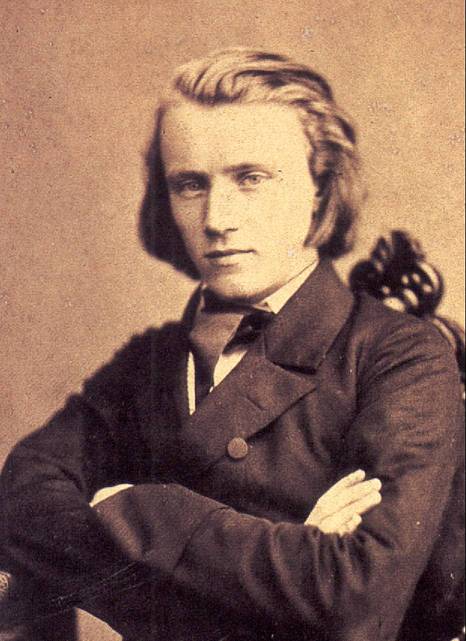Brahms, Scherzo Op. 4
I want to continue looking at the scherzo this week (and beyond). We are not taking them on in chronological order, since we started out two weeks ago with Chopin and then moved to Beethoven, but I don’t think chronology needs to be a big concern here.

Johannes Brahms (1833-1897) wrote his Scherzo Op. 4 when he was less than 20 years old. You may recall that it took Brahms quite a while to produce his first symphony. It was published in 1876 as opus 68 when he was 43. Brahms was laboring under “the shadow of Beethoven,” and Beethoven’s legacy had set the symphonic bar quite high.
Brahms was a very good pianist, however. He produced his three piano sonatas early in his composing career—in 1853 in fact, the same year as the scherzo. It was also in 1853 that he traveled to Weimar to meet Franz Liszt. Now that raises one of Professor Carol’s favorite topics: the “War of the Romantics” that would pit the New German School of Wagner and Liszt against the traditionalists, who would ultimately be personified by Brahms. It was serious stuff. But this first meeting was cordial enough, and Liszt played this scherzo and was said to speak highly of it.
This scherzo is an independent work like those of Chopin. It has a second trio, giving it the form of a rondo (A – B – A – C – A), which is expanded over the form of Beethoven’s Septet. Beethoven would approve of that expansion, and it has many of the qualities of a typical Beethoven scherzo. On the other hand, its driving rhythm has been described as demonic, and music critic Malcolm McDonald noted “whiffs of Hoffmannesque devilry.” That sounds more like something Liszt would appreciate, and I think you can hear some foreshadowing of Listz’s Mephisto Waltzes in the work.



